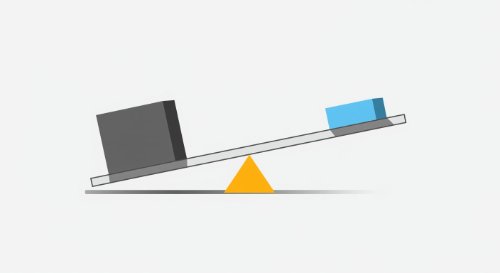Worked examples (8) - Couples | Systems of Forces on Rigid Bodies - Engineering Mechanics (Undergraduate Advanced)
SPONSORED Get Personalized Tutoring NowStruggling with a tough concept or looking to advance your skills? Our expert tutors offer one-to-one guidance tailored to your unique needs.
Get instant support, clear explanations, and practical strategies to master even the most challenging subjects. With flexible scheduling and customized learning plans, success is just a session away.
Book your personalized tutoring today and start achieving your academic goals!
Get Personalized Tutoring NowStruggling with a tough concept or looking to advance your skills? Our expert tutors offer one-to-one guidance tailored to your unique needs.
Get instant support, clear explanations, and practical strategies to master even the most challenging subjects. With flexible scheduling and customized learning plans, success is just a session away.
Book your personalized tutoring today and start achieving your academic goals!
Struggling with a tough concept or looking to advance your skills? Our expert tutors offer one-to-one guidance tailored to your unique needs. Get instant support, clear explanations, and practical strategies to master even the most challenging subjects. With flexible scheduling and customized learning plans, success is just a session away. Book your personalized tutoring today and start achieving your academic goals!
 Systems of Forces on Rigid Bodies - Engineering Mechanics (Undergraduate Advanced)This course is a comprehensive guide to the effects of forces on rigid bodies, a critical topic in engineering mechanics. It moves beyond particles to analyse systems where the point of application of a force is crucial, introducing the concepts of moments and couples. The material covers the calculation of moments in two and three dimensions, the properties of couples, and the methods for reducing complex force systems into simpler, statically equivalent systems.
Understanding moments is fundamental to all structural and mechanical analysis. These principles are used to calculate the bending and twisting stresses in beams, shafts, and machine components, and to ensure the rotational stability of structures and vehicles. A command of this subject is non-negotiable for designing any object intended to withstand real-world loads without failing or rotating unintentionally.
By the end of this course, you will be able to calculate the moment of a force about any point or axis using both scalar and vector methods. You will also be able to determine the moment of a couple, and reduce any complex system of forces and couples acting on a rigid body to its simplest equivalent form, such as a single resultant force and couple moment at a specified point.
This course is for undergraduate students in any engineering discipline who have already completed a course on the statics of particles. It is the direct prerequisite for the study of the equilibrium of rigid bodies, and is a necessary foundation for advanced courses in dynamics, mechanics of materials, and structural analysis.
Systems of Forces on Rigid Bodies - Engineering Mechanics (Undergraduate Advanced)This course is a comprehensive guide to the effects of forces on rigid bodies, a critical topic in engineering mechanics. It moves beyond particles to analyse systems where the point of application of a force is crucial, introducing the concepts of moments and couples. The material covers the calculation of moments in two and three dimensions, the properties of couples, and the methods for reducing complex force systems into simpler, statically equivalent systems.
Understanding moments is fundamental to all structural and mechanical analysis. These principles are used to calculate the bending and twisting stresses in beams, shafts, and machine components, and to ensure the rotational stability of structures and vehicles. A command of this subject is non-negotiable for designing any object intended to withstand real-world loads without failing or rotating unintentionally.
By the end of this course, you will be able to calculate the moment of a force about any point or axis using both scalar and vector methods. You will also be able to determine the moment of a couple, and reduce any complex system of forces and couples acting on a rigid body to its simplest equivalent form, such as a single resultant force and couple moment at a specified point.
This course is for undergraduate students in any engineering discipline who have already completed a course on the statics of particles. It is the direct prerequisite for the study of the equilibrium of rigid bodies, and is a necessary foundation for advanced courses in dynamics, mechanics of materials, and structural analysis.
This course is a comprehensive guide to the effects of forces on rigid bodies, a critical topic in engineering mechanics. It moves beyond particles to analyse systems where the point of application of a force is crucial, introducing the concepts of moments and couples. The material covers the calculation of moments in two and three dimensions, the properties of couples, and the methods for reducing complex force systems into simpler, statically equivalent systems. Understanding moments is fundamental to all structural and mechanical analysis. These principles are used to calculate the bending and twisting stresses in beams, shafts, and machine components, and to ensure the rotational stability of structures and vehicles. A command of this subject is non-negotiable for designing any object intended to withstand real-world loads without failing or rotating unintentionally. By the end of this course, you will be able to calculate the moment of a force about any point or axis using both scalar and vector methods. You will also be able to determine the moment of a couple, and reduce any complex system of forces and couples acting on a rigid body to its simplest equivalent form, such as a single resultant force and couple moment at a specified point. This course is for undergraduate students in any engineering discipline who have already completed a course on the statics of particles. It is the direct prerequisite for the study of the equilibrium of rigid bodies, and is a necessary foundation for advanced courses in dynamics, mechanics of materials, and structural analysis.
 MEE 205: Engineering Mechanics - StaticsMaster the science of structural stability. This programme provides a complete education in engineering statics, covering the analysis of forces, moments, and equilibrium in rigid bodies. It delivers the non-negotiable principles required to design safe and reliable structures.
This learning track is for first or second-year undergraduate students in Civil, Mechanical, Aerospace, and Structural Engineering. It is the foundational mechanics course upon which all subsequent design and analysis subjects are built.
Analyse the forces within any static structure, from simple trusses to complex machines. You will master free-body diagrams, equilibrium equations, and structural analysis methods. This programme equips you with the core analytical skills for a career in structural, mechanical, or civil design.
MEE 205: Engineering Mechanics - StaticsMaster the science of structural stability. This programme provides a complete education in engineering statics, covering the analysis of forces, moments, and equilibrium in rigid bodies. It delivers the non-negotiable principles required to design safe and reliable structures.
This learning track is for first or second-year undergraduate students in Civil, Mechanical, Aerospace, and Structural Engineering. It is the foundational mechanics course upon which all subsequent design and analysis subjects are built.
Analyse the forces within any static structure, from simple trusses to complex machines. You will master free-body diagrams, equilibrium equations, and structural analysis methods. This programme equips you with the core analytical skills for a career in structural, mechanical, or civil design.
Master the science of structural stability. This programme provides a complete education in engineering statics, covering the analysis of forces, moments, and equilibrium in rigid bodies. It delivers the non-negotiable principles required to design safe and reliable structures. This learning track is for first or second-year undergraduate students in Civil, Mechanical, Aerospace, and Structural Engineering. It is the foundational mechanics course upon which all subsequent design and analysis subjects are built. Analyse the forces within any static structure, from simple trusses to complex machines. You will master free-body diagrams, equilibrium equations, and structural analysis methods. This programme equips you with the core analytical skills for a career in structural, mechanical, or civil design.
 GET 207: Applied MechanicsMaster the non-negotiable principles of Engineering Mechanics. This track delivers a rigorous, complete programme in statics and dynamics, built to the NUC GET 207 core curriculum. It moves methodically from force systems and equilibrium to the kinematics of rigid bodies and the kinetics of particles. This is the foundation of all structural and mechanical analysis.
This programme is for first and second-year undergraduate engineering students. It is an essential requirement for students in Mechanical, Civil, Structural, Aerospace, and Mechatronics engineering. A working knowledge of introductory physics and calculus is assumed.
On completion, you will be able to analyse and solve complex problems in statics and particle dynamics. You will draw free-body diagrams, apply equilibrium equations, analyse trusses and frames, and solve motion problems using Newton's laws, work-energy, and momentum methods. This programme prepares you for advanced courses, particularly Mechanics of Materials, and future professional engineering practice.
GET 207: Applied MechanicsMaster the non-negotiable principles of Engineering Mechanics. This track delivers a rigorous, complete programme in statics and dynamics, built to the NUC GET 207 core curriculum. It moves methodically from force systems and equilibrium to the kinematics of rigid bodies and the kinetics of particles. This is the foundation of all structural and mechanical analysis.
This programme is for first and second-year undergraduate engineering students. It is an essential requirement for students in Mechanical, Civil, Structural, Aerospace, and Mechatronics engineering. A working knowledge of introductory physics and calculus is assumed.
On completion, you will be able to analyse and solve complex problems in statics and particle dynamics. You will draw free-body diagrams, apply equilibrium equations, analyse trusses and frames, and solve motion problems using Newton's laws, work-energy, and momentum methods. This programme prepares you for advanced courses, particularly Mechanics of Materials, and future professional engineering practice.
Master the non-negotiable principles of Engineering Mechanics. This track delivers a rigorous, complete programme in statics and dynamics, built to the NUC GET 207 core curriculum. It moves methodically from force systems and equilibrium to the kinematics of rigid bodies and the kinetics of particles. This is the foundation of all structural and mechanical analysis. This programme is for first and second-year undergraduate engineering students. It is an essential requirement for students in Mechanical, Civil, Structural, Aerospace, and Mechatronics engineering. A working knowledge of introductory physics and calculus is assumed. On completion, you will be able to analyse and solve complex problems in statics and particle dynamics. You will draw free-body diagrams, apply equilibrium equations, analyse trusses and frames, and solve motion problems using Newton's laws, work-energy, and momentum methods. This programme prepares you for advanced courses, particularly Mechanics of Materials, and future professional engineering practice.